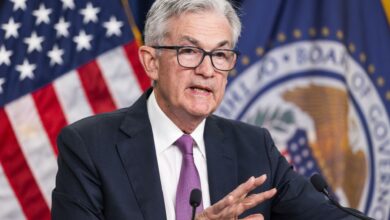Combating fake news is big challenge for journalism in digital age

By Cristina Sanchez Reyes
Mexico City, Apr 5 (EFE).- Combating fake news is one of the main challenges for journalism in the digital age, according to what several experts said at a forum organized by Agencia EFE, Spain’s international news agency, in Mexico City on Tuesday.
“Working with fake news is almost a must, and that makes it necessary to train journalists and citizens,” said Gabriela Cañas, the president of Agencia EFE, at the Dialogos EFE forum titled “Journalism in the Mass Disinformation Age.”
At the event, the experts discussed the role currently played by the social networks and digital media in spreading hoaxes, and the traditional media outlets’ responsibility to combat it.
“There’s an incentive to lie, an incentive to degrade rigorous information … Now, we’re seeing an ongoing need to have disinformation,” said Jenaro Villamil, the general director for the state of Mexico’s Public Radio Broadcasting System (SPR).
He said that the current period is one “of the algorithm as a tool in deception, in the fabrication of news with the ability to go viral.”
Along those lines, Villamil warned that the media are currently facing the fact that 85 percent of the creators of fake news are businesses.
Martha Ramos, the general publishing director of the Mexican Publishing Organization (OEM), said that one of the main problems for the traditional media is that “it takes a lot of work to go at the speed” of the social networks and online media outlets.
This, she said, is due to the importance of verifying information, since often “you prefer to lose an exclusive rather than report fake news.”
She added that society lacks a culture that enables people to doubt everything they see and “that doubt (needs to be) taught right from the start.”
Balbina Flores, a correspondent for Reporters Without Borders, said that the issue of fake news has been a constant in the media space and thus in 2018 her organization proposed that factual information be made a human right.
“Information is not anyone’s property. It belongs to everyone,” she said.
She also said that media representatives “have to be much more responsible” about verifying information, “but that means more work.”
And she added that one must also be more aware of journalistic ethics “and that is the responsibility of the communications media and reporters.”
“The biggest challenge facing journalism is producing … trustworthy reporting,” she insisted.
In that regard, Cañas said that one must “appeal to the responsibility of journalists but also to that of citizens,” adding that “people have stopped reading, and that is a problem for everyone.”
The role of women in journalism has been complicated but enormous steps have been taken to eliminate salary gaps and gender gaps in the media, according to the journalists participating in the second panel of the day, titled “Women in Media Leadership.”
“We women have been very important. Before, we were invisible in all areas, as protagonists of information but also as reporters. Today, that has changed,” Cañas said.
Danielle Dithrubide, the director of Televisa’s International News Area, said that women in media leadership roles have made a difference, especially “in the way of administering the zones of power, because we’re working a great deal more and we’re accustomed to doing more things outside of work, like household chores,” she said.
Meanwhile, OEM general director Martha Ramos said that women have managed to contribute their vision in a world that before was led exclusively by men.





